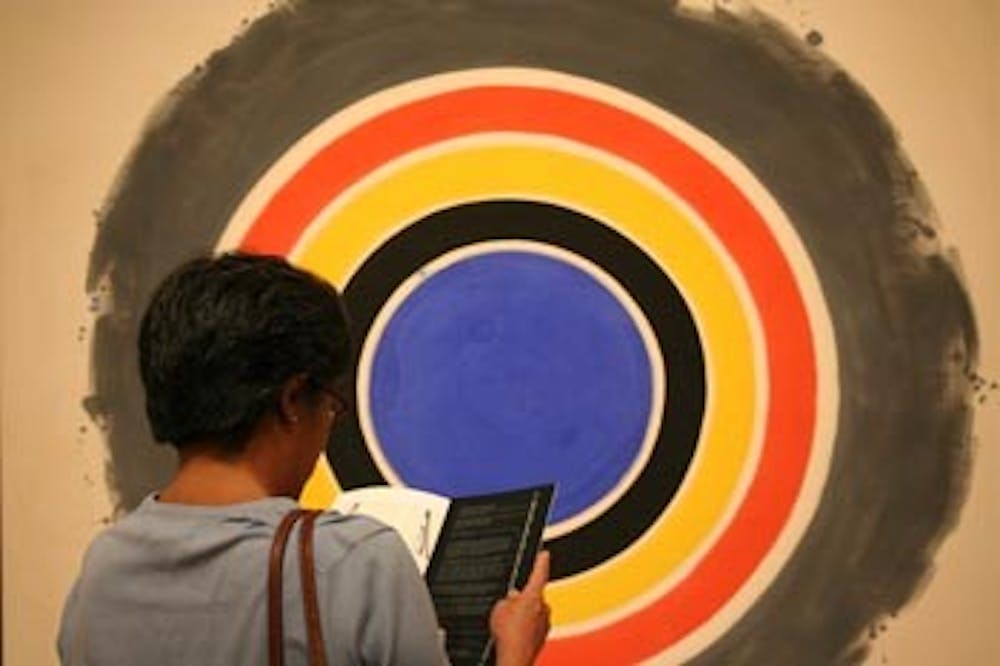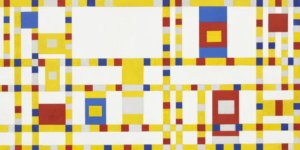It all starts with a plan. If you want to succeed, you must be prepared for the unexpected — and the art world is no different. Whether you are an emerging artist or an already established presence in the art world, stable and long-lasting success can only be achieved by careful observations and planning accordingly. In this article, we will do our best to help you create a success plan of your own!
Create!
This is the starting point for everything. You can’t expect to build a great career or business without doing good work. You must be extremely specific about what you’re producing and for whom you’re making it. Additionally, defining and picturing your art career in this way can help you recognize the logical sequence of actions to take to build your art business and reduce the confusion and fear that comes with undertaking an unsustainable project.
These responses can also aid you in the creation of an artist statement, which you’ll need for anything from exhibition applications to your website’s About section.
Learn About Your Target Market
It’s time to start looking for the proper market for your work once you’ve figured out who you are as an artist and what you have to offer.
As with any other business, you must learn as much as possible about who could be interested in purchasing your art—locally, nationally, and globally. You must keep up with current changes in the art world and how the economy in different parts of the globe affects art purchasers.
Here are some questions you should be asking yourself:
- What is the size of your prospective market?
- Who is purchasing art these days?
- Who are those that are selling art?
- Who are your competitors (i.e., those who provide similar work) and how much do they charge for it?
- Who do you want to be your target audience?
- What role does your work play in the larger art world?
- What kind of environments do you want your work to be displayed in?

You need to do all of this in order to identify your target customer. This is a marketing buzz phrase that you’ll hear a lot, but that’s just because it’s so crucial! When you find out who your ideal client is—the one who is most likely to buy your artwork, you’ll be able to better grasp how to market your work so that you can make money.
To narrow down who your buyers are and how to win them over, ask yourself these questions. Also, don’t be rash! Your whole marketing approach will be based on these responses, from how you contact art consumers to the tone of voice you use to communicate.
There are many ways to promote your work, including art fairs, galleries, social media, email newsletters, and blogging, but not all of them will be where your consumers are searching. Choose a marketing approach that matches your art business and include these channels in your business plan based on the characteristics of your target consumer.
Learn About Possible Marketplaces
How to define an “art marketplace?” The simple answer would be anywhere where the general public can see your work. With this, we can break it down into three distinct categories.
The first one would be public exhibition spaces. This includes public art galleries, libraries, museums, open submission competitions, and similar.
Then, we have commercial gallery spaces. These might be anything from local galleries to major art galleries.
And last, but not least — direct access spaces. These are the places where people may come to see your work directly from you, such as your studio, art festivals, your art website, and so on.
You’ll be better off making judgments about developing and displaying your work if you know more about your target market and marketplace.
Start Working On A Plan
And now, we are at the first step. The preparations are complete, and you now need to start working on your plan for success!
Now is the perfect moment to get started, and it may be as easy as answering a few questions. After all, where do you want to be in a year, five years, or ten years? In the long term, having a clear vision for your future can help you set objectives and stay focused.
To set up the plan, think about the following:
- Over the next 12 months, how much do you expect to earn from your work?
- Which months will be the most profitable?
- How will you get by during the months that bring less (or no) profit?
- To reach your financial goals, how much work will you have to sell?
- How much effort will you need to put into your work to sell that amount?

Define The Finances
Talking about money may make anybody nervous, yet it’s an inescapable and vital stage in every effective business strategy.
You can plan how you will maintain your livelihood when you remove the guesswork from your financial position. You’ll also be able to establish specific objectives for how much you need to earn and save in order to pay your costs.
Write down the prices of everything you can think of to run an art business in this area of your strategy, from materials to studio space rental. Make a separate list for your costs, including anything from mortgage payments and food to date evenings. As your business strategy develops, you can always come back and add more.
After you’ve made your itemized list, you’ll need to figure out how you’re going to pay for everything while your business is still growing. Savings, joint income, an artist grant, crowdfunding, selling a specific number of pieces, part-time work, and so on might all be possibilities.
Remember that the greatest approach to achieve financial success is to plan.
Price For Profit
One of the most challenging undertakings for artists to figure out is pricing. It might be much more difficult to figure out how to generate a profit. But isn’t that the point of being a professional artist — to make it possible to make a livelihood from your art?
There’s a persistent notion that artists must be “hungry.” That isn’t the case. Your art business plan is crucial to your success, and how you price your work is a big part of it. While there are several rules you could adhere to, a few stick out.
First and foremost, be aware of your expenses and ensure that they are included in the price of your artwork. Time, supplies, shipping, and even frame, if necessary, are all costs you should remember to factor in (or you’ll have to pay for it afterward).
Consider this scenario: you have a unique skill set that others respect and are willing to pay you for. Keep in mind that you’re delivering both a service and a finished product. Decide on a fair hourly rate that you’d be happy with and work backward from there. According to the US Department of Labor, the average hourly salary for a fine artist is $24.58. Use this figure to assist you in estimating.
Second, consider employing art pricing formulae. Some justify a monetary value based on the project’s scope, while others rely only on labor time and expenditures. Your education and skill level may also have a role. But, whatever method you choose, always add in your costs to ensure that you have a profit in the end.
Third, have consistent prices. To put it simply, when no one feels undercut, it will help you maintain a better connection with galleries and collectors. Furthermore, it will foster a sense of trust between you and your audience, which will aid in the development of your reputation as a reputable artist.
Finally, consider selling artwork at a variety of prices. A $1000 artwork will not be affordable to all of your followers. Smaller, less expensive pieces are more accessible to purchasers who can’t afford larger, more expensive works, and you’ll be able to throw a broader net on your buyer pool in the end. Every sale is significant!

Promote Your Presence Online
Nowadays, you can’t run a business without having an internet presence. It’s the simplest way for people to discover you and receive answers so that they can preview and buy your art. That means your website and social media accounts must be up to date! We’re talking about a clear and personable About section, readily findable contact information, functioning links, high-quality photos of your work, and a clear and recognizable web address and usernames on social media.
All of these factors combine to create your art brand, or what people think of you and your artwork based on what they see, frequently right away, anytime they interact with your company.
It’s OK if you’re not a web designer. These days, many websites allow you to create your website using professionally designed drag-and-drop templates. And, when it comes to social media, the golden rule is to concentrate on doing a few things really well rather than overextending oneself. Trying to conquer every social media platform that comes your way can leave you with no time and ignored accounts, which is terrible for your business.
Concentrate on selecting the proper social media outlets for you (and your target consumer!) and posting high-quality content.
Understand The Importance Of Networking
A successful art profession, like most others, is built on essential contacts that may help you develop your prospects in the art industry.
Networking may be complex for most artists accustomed to spending most of their time alone in their studio, especially if you dislike small talk and find forced conversation exhausting. But the truth is that networking isn’t limited to polite greetings at a gallery opening.
Creating more profound, meaningful connections—connections that seem genuine, authentic exchanges—can be the secret to networking like the badass artist you are.
You should, for example, make an effort to connect with other artists. Attend association meetings and provide resources, advice, support, and stimulating conversation. Continue to visit and become a known face! In your discussions, practice the skill of active listening. More questions should be asked, followed by responses to the replies. Even individuals you consider frightening are seeking ways to relate to and connect with you.

Ensure Your Portfolio And Online Presence Are Up To Date
Whether your portfolio is physical or digital, it is necessary to keep it fully updated at all times.
For example, if your portfolio is digital and you create traditional art, take the time to upload your current work after you’ve finished uploading your previous works. Having a completed item languishing in your studio does nothing for your art business.
Instead, make it a habit to post your artwork to your website as soon as possible by thinking of it as the final stage in the creative process. Fans want to see what you’ve been working on, and potential purchasers want to see what’s available, just like they want to know what you’ve sold.
Your new item could be just what they’re seeking on that particular day!
Moreover, you should ensure that you are removing the past pieces as you are creating new ones. Clients and companies don’t want to sift through your past works for hours until they locate anything they like. They’re more inclined to take a quick look at one or two pieces before making a selection. As a result, you must be merciless in picking just your finest work on your website and displaying it prominently — and that is why frequently updating it matters.
While consumers would search through a bazaar for inexpensive goods, a high-end store will have a much-limited selection of well-chosen items. You won’t go wrong if you use the same approach to your portfolio site.
There is no ‘optimal’ amount of samples to display; it will vary from one creative to the next. But one thing is sure: the more work you include, the more organized it must be, with a clear hierarchy and everything arranged in an easily understandable manner.
Being up-to-date is especially important for your online presence and portfolio — it is not sufficient to just create an artist website or a social media page. It must be up-to-date, high-quality, and functional in order to be valuable and aid in the growth of your business.
Have you lately received attention at an exhibition or been accepted into a gallery? Do you have any workshop openings or exciting studio news to share? You’ve already planned and completed the job; all that’s left is to share it with the rest of the world.
What difference does it make? Promoting the events that you are a part of keeps you current and professional. Build your artist reputation by updating your artist About Me section with any fresh material that demonstrates you are active in the artist community.
Assist potential customers and admirers in gathering as much information as possible about you for them to purchase your artwork.
Don’t forget that your artist website is a significant extension of your art business. It is on the internet for your audience to see whether it’s updated or not, and people will assess your brand from it. Double-checking these items will show that you are serious about thriving as an artist and that your brand is professional.
Conclusion
Being a professional artist is a never-ending cycle.
Keep creating, examining your industry and marketplace regularly to determine where you want to be in the coming months. Prepare business strategies that will help you reach your year’s goals. And never stop looking for methods to get people to notice your work. On that note, when all of your social media and website’s current portfolio contents are up-to-date, don’t forget to upload those artworks to a free digital archiving website like ARTDEX, to keep a historical record of all of your art — from the beginning of your art career to the current projects. This personal digital storage and archive will be the important repository and accessible source of your entire oeuvre in order to track your artistic development.
Moreover, the chances you create on a global platform will eventually develop into valuable connections, then sales, and finally regular clients. It isn’t always simple, but it works!
If you need any more help with this, ARTDEX fosters a community of art collectors, artists, art dealers, and curators, which all may be able to provide some valuable insight! Connect with them today and ensure your network of contacts grows from the very beginning of your art business journey!


![[Left] Kusama with her piece Dots Obsession, 2012, via AWARE, [Right] Yayoi Kusama (Courtesy Whitney Museum of American Art) | Source: thecollector.com](https://www.artdex.com/wp-content/uploads/2024/04/Left-Kusama-with-her-piece-Dots-Obsession-2012-via-AWARE-Right-Yayoi-Kusama-Courtesy-Whitney-Museum-of-American-Art-Source-thecollector.com--300x172.png)




